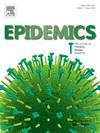Optimizing spatial distribution of wastewater-based epidemiology to advance health equity
IF 2.4
3区 医学
Q2 INFECTIOUS DISEASES
引用次数: 0
Abstract
In 2022, the US Centers for Disease Control and Prevention commissioned the National Academies of Sciences, Engineering, and Medicine to assess the role of community-level wastewater-based epidemiology (WBE) beyond COVID-19. WBE is recognized as a promising mechanism for promptly identifying infectious diseases, including COVID-19 and other novel pathogens. An important conclusion from this initiative is the critical importance of maintaining equity and expanding access to fully realize the benefits of wastewater surveillance for marginalized communities. To address this need, we propose an optimization framework that strategically allocates wastewater monitoring resources at the wastewater treatment plant (WWTP) level, ensuring more effective and equitable distribution of surveillance efforts to serve underserved populations.
The purpose of the framework is to obtain a balanced spatial distribution, inclusive population coverage, and efficient representation of disadvantaged groups in the allocation of resources for WBE. Furthermore, the framework concentrates on areas with high population density and gives priority to vulnerable regions, as well as identifying signals that display significant variations from other monitored sources. The optimization objective is to maximize a weighted combination of these critical factors. This problem is formulated as an integer optimization problem and solved using simulated annealing. We evaluate various scenarios, considering different weighting factors, to optimize the allocation of WWTPs with monitoring systems. This optimization framework provides an opportunity to enhance WBE by providing customized monitoring strategies created to address specific priorities and situations, thus enhancing the decision-making processes in public health responses.
优化基于废水的流行病学空间分布,促进健康公平。
2022 年,美国疾病控制和预防中心委托美国国家科学、工程和医学院评估社区级废水流行病学 (WBE) 在 COVID-19 之后的作用。WBE 被认为是及时发现传染病(包括 COVID-19 和其他新型病原体)的一种有前途的机制。这项计划得出的一个重要结论是,要充分实现废水监测为边缘化社区带来的益处,保持公平和扩大普及至关重要。为了满足这一需求,我们提出了一个优化框架,在污水处理厂 (WWTP) 层面战略性地分配污水监测资源,确保更有效、更公平地分配监测工作,为得不到充分服务的人群提供服务。该框架的目的是在分配 WBE 资源时实现均衡的空间分布、全面的人口覆盖和弱势群体的有效代表。此外,该框架集中于人口密度高的地区,优先考虑易受影响的地区,并识别与其他监测来源有显著差异的信号。优化目标是最大化这些关键因素的加权组合。这个问题被表述为一个整数优化问题,并使用模拟退火法加以解决。考虑到不同的加权因素,我们对各种方案进行了评估,以优化配备监控系统的污水处理厂的分配。这一优化框架提供了一个机会,通过提供针对特定优先事项和情况的定制监测策略来提高水环境经济效益,从而加强公共卫生应对措施的决策过程。
本文章由计算机程序翻译,如有差异,请以英文原文为准。
求助全文
约1分钟内获得全文
求助全文
来源期刊

Epidemics
INFECTIOUS DISEASES-
CiteScore
6.00
自引率
7.90%
发文量
92
审稿时长
140 days
期刊介绍:
Epidemics publishes papers on infectious disease dynamics in the broadest sense. Its scope covers both within-host dynamics of infectious agents and dynamics at the population level, particularly the interaction between the two. Areas of emphasis include: spread, transmission, persistence, implications and population dynamics of infectious diseases; population and public health as well as policy aspects of control and prevention; dynamics at the individual level; interaction with the environment, ecology and evolution of infectious diseases, as well as population genetics of infectious agents.
 求助内容:
求助内容: 应助结果提醒方式:
应助结果提醒方式:


